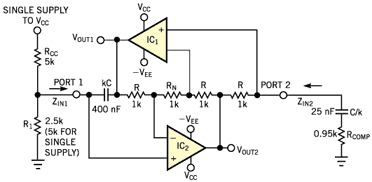ccchang
Junior Member level 2

- Joined
- Nov 14, 2007
- Messages
- 21
- Helped
- 1
- Reputation
- 2
- Reaction score
- 1
- Trophy points
- 1,283
- Location
- Penang Island, Malaysia
- Activity points
- 1,481
Hi
I am testing wein bridge oscillator and I looking to make it work. I have study the page below, but there are some concept i do not understand. Hope some can give a guide.
I attach a schematic a wein bridge oscillator with a single supply. But as mention in the post above, node A in the schematic can be consider as a virtual ground for the oscillator, am I right ? The wein oscillator also symmetrically biased.
So can this wein oscillator work ?
If I put my oscilloscope probe to the output and the ground the Node A. I should see a sine wave oscillates at center 0V, right ?
Thanks. Surely I can learn a lot from you all. Best wish to all E&E experts.
ccchang
I am testing wein bridge oscillator and I looking to make it work. I have study the page below, but there are some concept i do not understand. Hope some can give a guide.
I attach a schematic a wein bridge oscillator with a single supply. But as mention in the post above, node A in the schematic can be consider as a virtual ground for the oscillator, am I right ? The wein oscillator also symmetrically biased.
So can this wein oscillator work ?
If I put my oscilloscope probe to the output and the ground the Node A. I should see a sine wave oscillates at center 0V, right ?
Thanks. Surely I can learn a lot from you all. Best wish to all E&E experts.
ccchang


